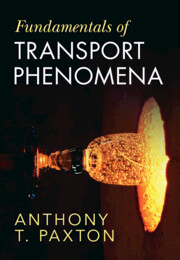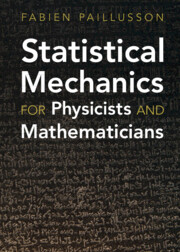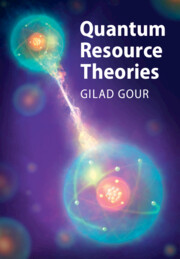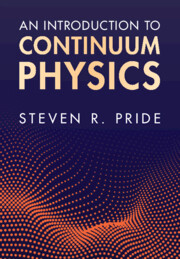Refine search
Actions for selected content:
107 results
33 - Macro Properties of Astrophysical Gas
- from Part Six - Modeling Absorbers
-
- Book:
- Quasar Absorption Lines
- Published online:
- 17 December 2025
- Print publication:
- 18 December 2025, pp 1317-1340
-
- Chapter
- Export citation
1 - The Potential of Universal Biology
-
- Book:
- Universal Biology
- Published online:
- 11 November 2025
- Print publication:
- 20 November 2025, pp 1-30
-
- Chapter
- Export citation

Fundamentals of Transport Phenomena
-
- Published online:
- 04 November 2025
- Print publication:
- 23 October 2025
3 - Thermodynamics without Time
- from Part I - Local Systems
-
-
- Book:
- The Arrow of Time
- Published online:
- 28 October 2025
- Print publication:
- 30 October 2025, pp 56-70
-
- Chapter
- Export citation
2 - Thermodynamics with and without Irreversibility
- from Part I - Local Systems
-
-
- Book:
- The Arrow of Time
- Published online:
- 28 October 2025
- Print publication:
- 30 October 2025, pp 12-55
-
- Chapter
- Export citation
1 - The Direction of Time: From the Cosmos to Local Systems
- from Part I - Local Systems
-
-
- Book:
- The Arrow of Time
- Published online:
- 28 October 2025
- Print publication:
- 30 October 2025, pp 3-11
-
- Chapter
- Export citation
5 - Quantum Statistical Mechanics
-
- Book:
- Statistical Mechanics for Physicists and Mathematicians
- Published online:
- 28 July 2025
- Print publication:
- 14 August 2025, pp 168-220
-
- Chapter
- Export citation
1 - What Is Statistical Mechanics For?
-
- Book:
- Statistical Mechanics for Physicists and Mathematicians
- Published online:
- 28 July 2025
- Print publication:
- 14 August 2025, pp 1-5
-
- Chapter
- Export citation

Statistical Mechanics for Physicists and Mathematicians
-
- Published online:
- 28 July 2025
- Print publication:
- 14 August 2025
1 - Introduction to phase transitions
- from Part I - General Aspects
-
- Book:
- Phase Transitions
- Published online:
- 01 May 2025
- Print publication:
- 15 May 2025, pp 3-61
-
- Chapter
- Export citation
An experimental investigation of the effect of a supercooled large droplet impingement on freezing behaviour
-
- Journal:
- The Aeronautical Journal / Volume 129 / Issue 1339 / September 2025
- Published online by Cambridge University Press:
- 13 May 2025, pp. 2556-2574
-
- Article
- Export citation

Quantum Resource Theories
-
- Published online:
- 03 May 2025
- Print publication:
- 10 April 2025
Dynamics of homeostats: the basis of electrical, chemical, hydraulic, pH and calcium signaling in plants
- Part of
-
- Journal:
- Quantitative Plant Biology / Volume 6 / 2025
- Published online by Cambridge University Press:
- 21 March 2025, e8
-
- Article
-
- You have access
- Open access
- HTML
- Export citation

An Introduction to Continuum Physics
-
- Published online:
- 06 February 2025
- Print publication:
- 13 February 2025
Chapter 17 - Ecology
- from Part IV - Nature, Science, and the Environment
-
-
- Book:
- Gerard Manley Hopkins in Context
- Published online:
- 16 January 2025
- Print publication:
- 16 January 2025, pp 149-156
-
- Chapter
- Export citation
Chapter 19 - Energy Physics
- from Part IV - Nature, Science, and the Environment
-
-
- Book:
- Gerard Manley Hopkins in Context
- Published online:
- 16 January 2025
- Print publication:
- 16 January 2025, pp 165-173
-
- Chapter
- Export citation
1 - Entropy
- from Part I - Information Measures
-
- Book:
- Information Theory
- Published online:
- 09 January 2025
- Print publication:
- 02 January 2025, pp 7-18
-
- Chapter
- Export citation
Thermodynamic control of gene regulation
-
- Journal:
- QRB Discovery / Volume 6 / 2025
- Published online by Cambridge University Press:
- 26 September 2025, e24
- Print publication:
- 2025
-
- Article
-
- You have access
- Open access
- HTML
- Export citation
Homeostats: The hidden rulers of ion homeostasis in plants
-
- Journal:
- Quantitative Plant Biology / Volume 5 / 2024
- Published online by Cambridge University Press:
- 03 September 2024, e8
-
- Article
-
- You have access
- Open access
- HTML
- Export citation
Kinetic Model of Zeolite Paragenesis in Tuffaceous Sediments
-
- Journal:
- Clays and Clay Minerals / Volume 29 / Issue 5 / October 1981
- Published online by Cambridge University Press:
- 01 July 2024, pp. 323-330
-
- Article
- Export citation

